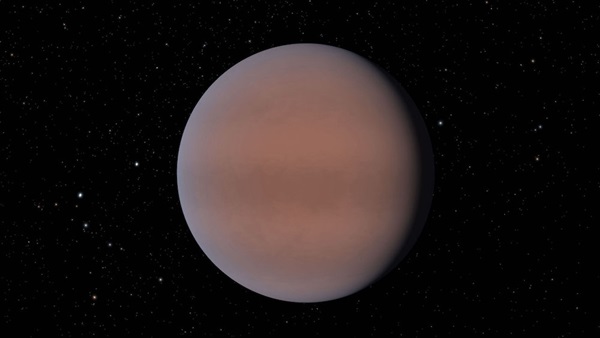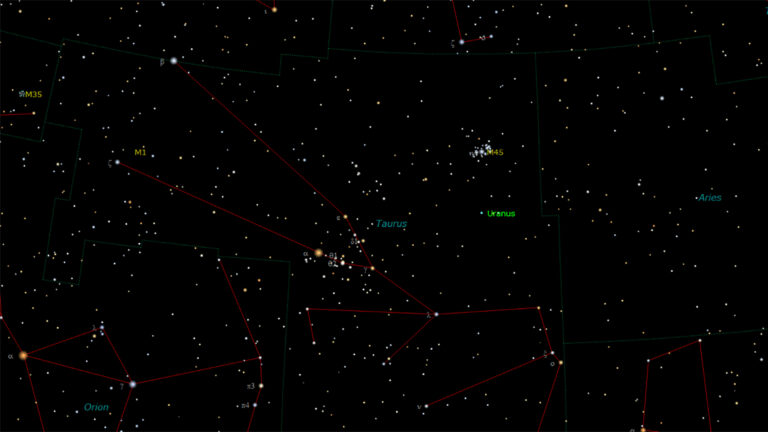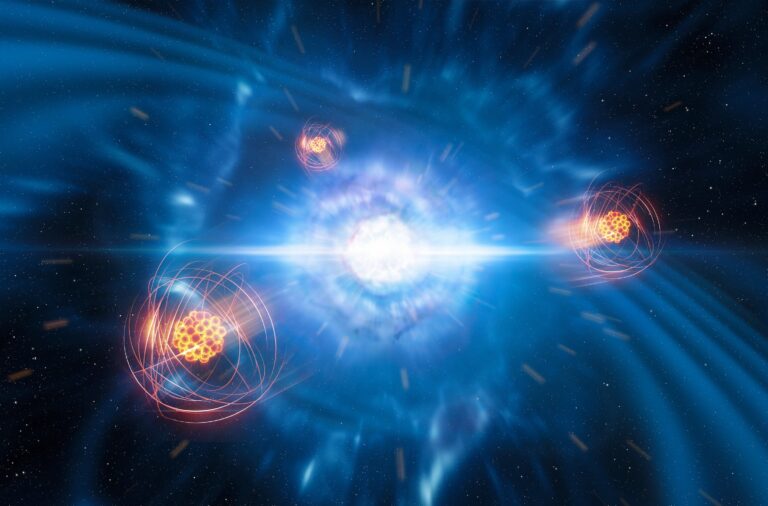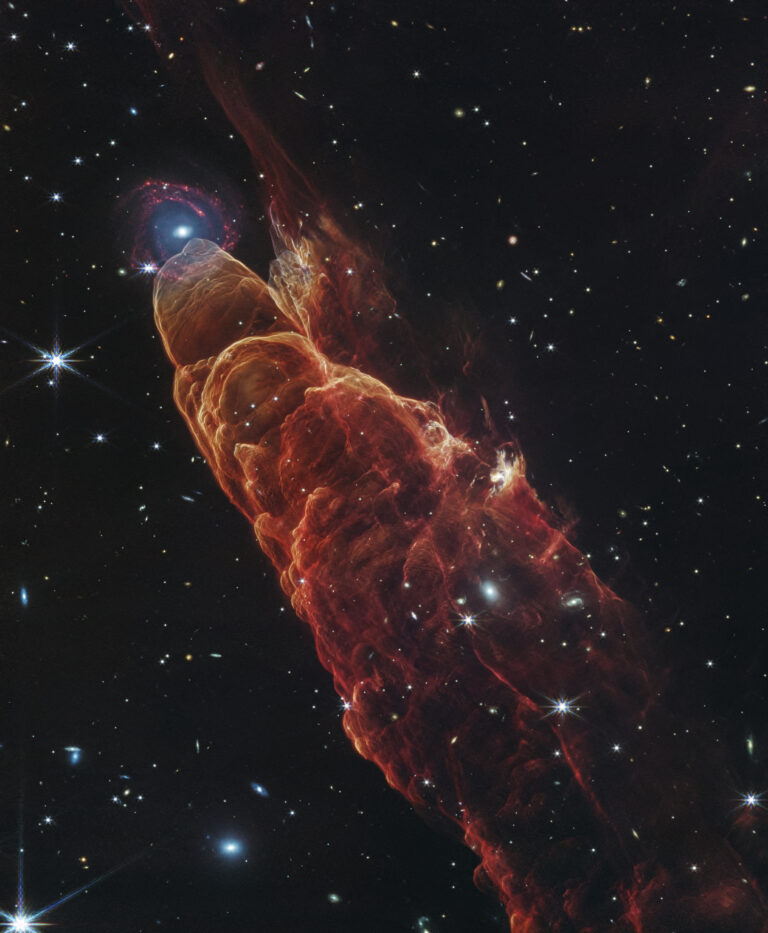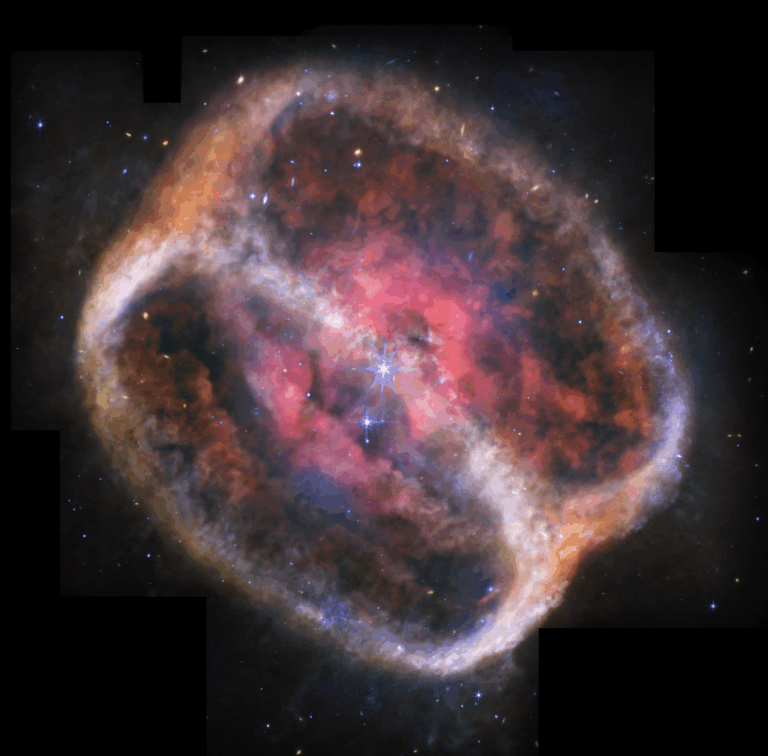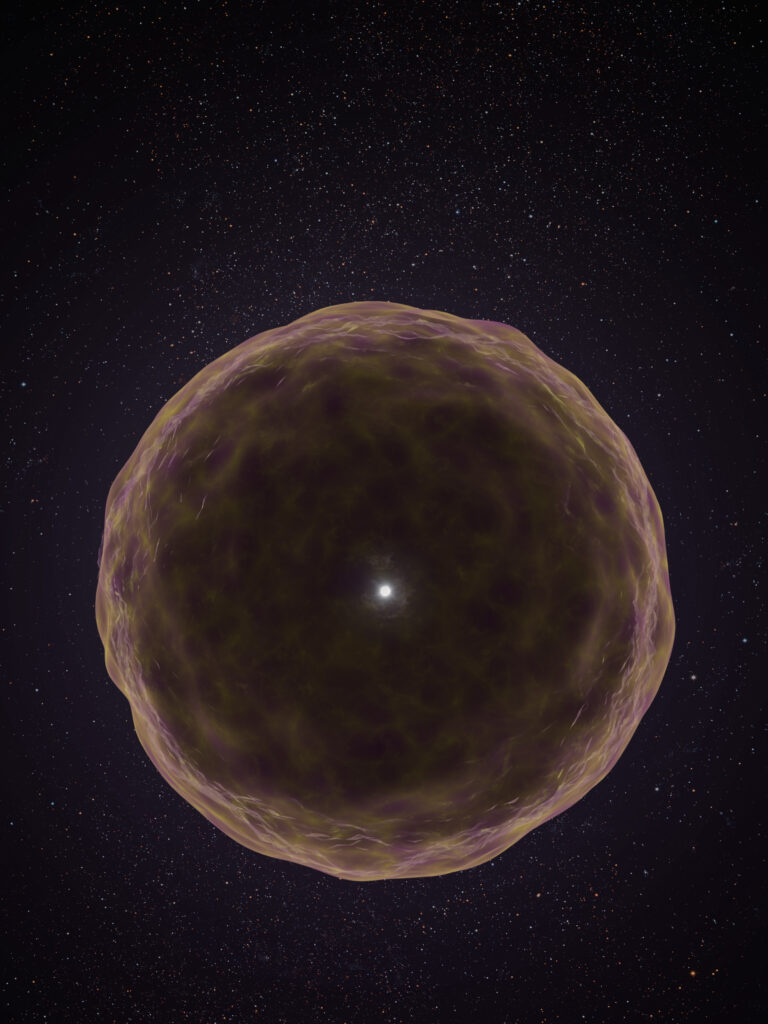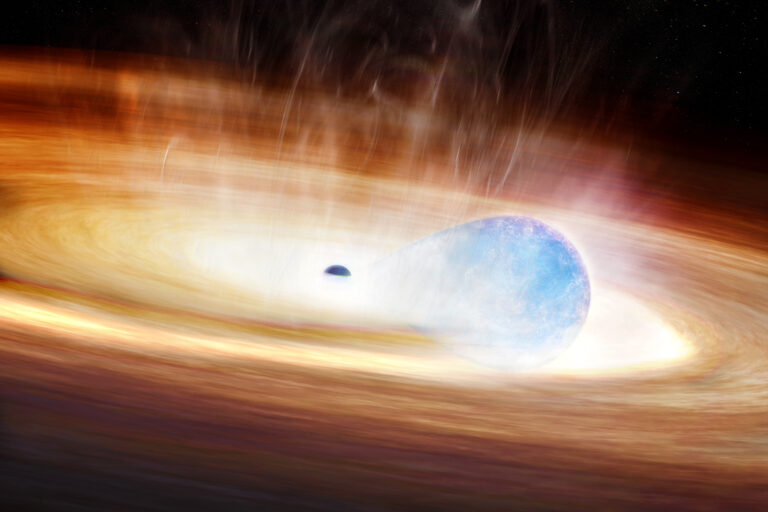Key Takeaways:
It’s no place you’d want to go to fill up your water bottle or take a swim, but TOI-674b has water vapor.
The newly found exoplanet was presented at this week’s series of virtual American Astronomical Society media briefings. (The organization’s in-person winter meeting was canceled due to COVID-19.) “We think we see water vapor on TOI-674 b, which is really exciting,” said University of Kansas doctoral student Jonathan Brande, while presenting the work.
The world is a super-Neptune some 23 times the mass of the Earth, located in the southern constellation Antlia, 150 light-years from us. It’s one of just a few detections of water vapor for this class of exoplanets.
But TOI-674b is most notable for where the planet is located: close to its host star, zipping around the red dwarf about once every 2 days. Neptune-like planets are so rare here that astronomers refer to this orbital region as the Neptune Desert. Researchers aren’t sure why short-orbit Neptunes are rare, but suspect that such planets typically migrate outward. If they stay in close, their atmospheres should be stripped by radiation from their host star, making the detection of water vapor on TOI-674b very unexpected.
At a temperate 680 degrees Fahrenheit (360 degrees Celsius), the world may seem like an “oasis,” joked Brande. But don’t book your beach vacay just yet, as it’s still unclear just how much water exists in the world’s air.
Understanding that has implications for how and where planets like TOI-674b form. In particular, it should place the planet’s origin on one side of the water ice line, which is located at the distance from a young, hot, still-forming star where the temperature is cool enough for solid ice to form.
“Planets forming closer to their host stars inside the water ice line should have less atmospheric water than those forming further away, outside the water ice line,” Brande told Astronomy. If researchers can identify how much water is present in the atmosphere of TOI-674b, they can figure out whether it formed inside or outside the water ice line, he said. “In either case, it almost certainly didn’t form this close to the star and needed to migrate into its current orbit somehow.”
Finding water
Brande and his advisor, University of Kansas astronomer Ian Crossfield, identified the atmospheric water in spectra of the planet’s atmosphere obtained by the Wide Field Camera 3 instrument aboard the venerable Hubble Space Telescope. The observations were taken during three separate transits, when the planet passed in front of its host star. During transits, some light from the host star filters through the planet’s atmosphere before it reaches us. By seeing which wavelengths of light the atmosphere’s molecules absorb, scientists can determine what chemicals are there.
The size of the large planet transiting a relatively small star made atmospheric measurements easier than might otherwise be the case. The team was able to rule out alternative explanations for the signal, like methane.
Exoplanets like TOI-674 b can help us better understand our own Neptune and Uranus, which also have a history of migrating vast distances across our solar system. In some respects, it’s easier to detect the various chemicals in the atmosphere of hotter worlds in distant solar systems because the gases are excited by so much radiation from their host star. In contrast, Uranus and Neptune are pretty cold, leaving astronomers unsure of their precise compositions.
The recently deployed James Webb Space Telescope (JWST) holds the promise of making more precise measurements of atmospheres across an array of exoplanets. When it comes to TOI-674b, JWST could reveal more details about the world’s atmospheric composition, including the presence of clouds and heavier elements, and how much water it really has. This should help Brande and others understand where and how this planet formed — and perhaps bring us one step closer to understanding our own solar system’s ice giants.

